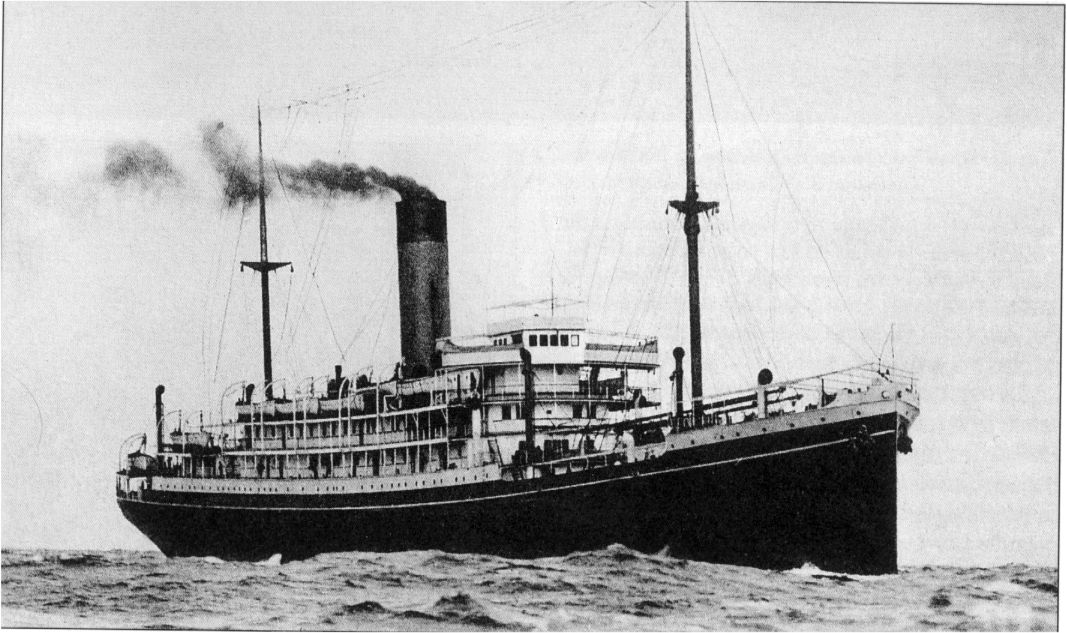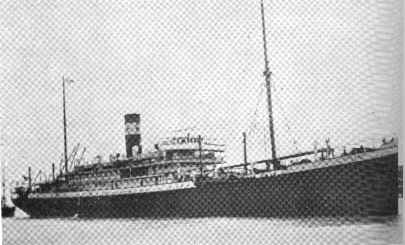|
|
|
At the scene of the sinking, the Formosa picked up 120 people, the Alhena took on board 450, the Empirestar 200, the Baden 17 and the Rosetti rescued 13 people. The survivors were then concentrated on four ships.These ships transferred the survivors of the wreck to the Brazilian mainland. On our reading of the newspaper account of the wreck it appears that no effort was made to pick up bodies. Indeed, the Moselle disposed of four bodies at sea, of rescued parties that subsequently died, despite the sailing time to Bahia only being one day.
The Formosa (353 people) and the Alhena (500 people) took survivors to Rio de Janeiro, while the Mosella (22 people) took survivors to Salvador de Bahia. The Rosetti took survivors to Pernambuco. The 183 people picked up by the Empirestar were transferred to the Formosa as the British ship was heading towards London rather than Brazil. Those picked up by the Avelona Star were also transferred to the Formosa.
It is interesting to note that an article in La Prensa reported that the Greek ship, Pera, picked up two people on the day after the accident. Who they were or where they were taken has never been revealed, but this would lower the death toll. The ship may have been en route to Europe and taken them back home.
An apochryphal story said that 10 survivors made land at Caravellas in Bahia state in a boat. This was never corroborated.

The Moselle
The sister ships MEDUANA y MOSELLA, were launched by Swan, Hunter and Wigham Richardson on Sep 30, 1920 and Sep.3, 1921 which were replicas of the AURIGNY and BELLE ISLE. They were built for the Compagnie Sud Atlantique.
To complete their South American fleet the Chargeurs Reunis bought in March 1928 the Sud Atlantique sisters. To fall in line with the other ships they were renamed KERGUELEN and JAMAIQUE. The JAMAIQUE was reffited in the Loire-St.Nazaire yard during 1947 sailing again from Bordeaux on Jan 28, 1948. The Jamaique was sold for scrap in Nov 1954 and the KERGUELEN in Feb 1955, after having ended their active lives on the Marseilles-Indochina line.
The captain of the Moselle at the time of the Mafalda disaster was Captain Privat.

The Formosa
The
Formosa was a mixed passenger/cargo vessel that sailed out out of Le Havre.
It had gross registered tonnage of 9975 tonnes. It measured 483.3 ft X 58.9ft.
Engines were 676 NHP.
It was launched in 1921 at La Seyne (France) for the Compagnie des Chargeurs Réunis Sud Atlantique. It was part of a series baptised the "Iles": Aurigny, Belle-Isle, Désirade et Groix. It was seized in 1943 by the Argentine government and was renamed the Rio Tunuyan. It was laid up in 1946 and broken up in 1953. It was the first ship of what would become the Argentine state shipping company, ELMA.
The vessel was captained on its rescue mission to the Mafalda by Captain Allemand.
The Rosetti
This ship belonged to the Lamport & Holt Line. It was built in 1900 and scrapped in 1929. It had 6508 tons GRT.
The Rosetti picked up two girls at five a.m. the next day, one French, Ivonne Simard (18) and one Algerian, Fatima Brassieux (23). They left the Mafalda in a lifeboat that quickly capsized and swam until the found some floating boards. Captain Denisson of the Rosetti. It was 30 miles when it heard the distress call relayed by the British steamer, the Rudby. Rosetti arrived at 21.40. The Rosetti stayed on the scene until 8am the next day. It then sailed for Pernambuco with its cargo of survivors. The Rosetti picked up Rosa Zambrino (29) on the morning of the 26th. She was swimming with her two year old son. Rosa was en route to her husband in Buenos Aires. The crew were so impressed by Rosa’s survival that they took up a subscription for her.
This
was a Blue Star Line vessel. It was sunk on the 30 June 1940 by the German submarine
U43.